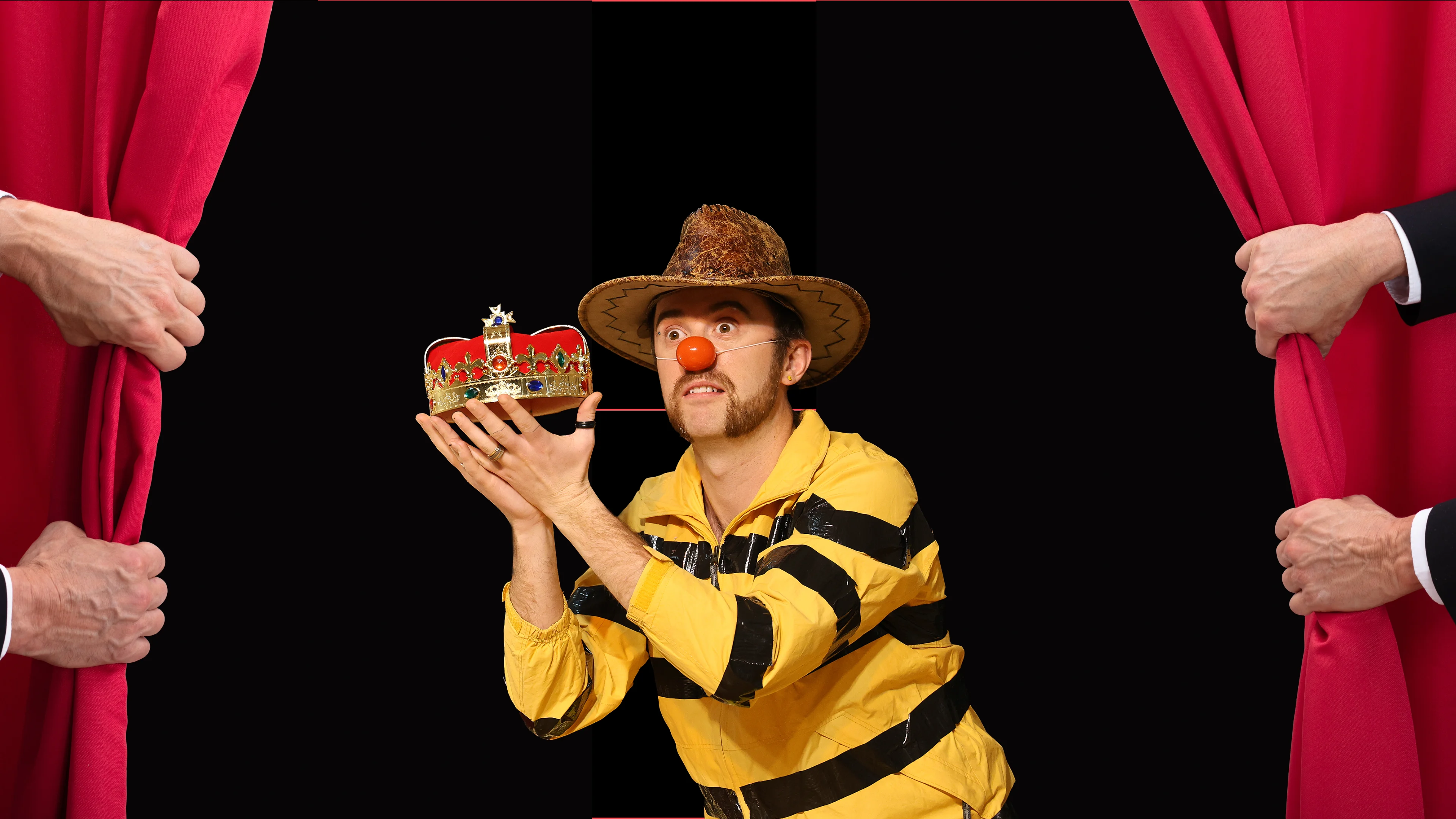
Taster Class In Clown Comedy
Theatre Deli, London
Learn More

Point of View (POV) is the filter through which your character experiences the world. It’s not just their mood or a passing opinion — it’s a deep-rooted attitude that colours everything they say, do, and believe.
A strong POV is one of the fastest ways to make a character feel real, comic, and distinct. It drives how they interpret events, how they justify their choices, and how they clash with others.
This is the character’s take on the world — their belief system, their biases, their core misreadings of reality. It often grows from their want, but extends far beyond it.
Importantly, there are two versions of a character’s POV:
How they see themselves — Their self-image, aspirations, and what they think they’re projecting.
How the audience sees them — The often less flattering, more revealing truth.
Comedy loves the gap between these.
Michael Scott from The Office
Self-view: “I’m the world’s best boss. I’m everyone’s best friend.”
Audience view: Inappropriate, needy, socially clumsy, often making situations worse.
The comedy lives in the collision between his sunny self-image and the awkward truth.
A specific POV, taken to extremes, often becomes a flaw — a lens that distorts reality in ways that create comic tension.
Example: A wealthy bachelor thinks everything can be bought, from vintage cars to genuine love. We watch them try (and fail) to apply their money-based worldview to human connection.
A good POV can also let you humanise larger issues. That same wealthy bachelor story can explore the emptiness of wealth without ever preaching.
A Universally Playable POV is a worldview that contains an inherent Game — a repeatable pattern of comic behaviour — and can be dropped into almost any situation.
It’s like a pair of tinted sunglasses: once you put them on, everything looks different.
Some POVs are too narrow — they run out of comic mileage after one scene. Others have range, adaptability, and can be put into wildly different contexts while still producing fresh comedy.
Example progression:
Non-playable: Baker who’s optimistic about their bakery’s success — too situational.
Playable: Optimistic baker — better, but still tied to one location/job.
Universally playable: The eternal optimist — can be a baker, a prison guard, a deep-sea diver, or a kidnapper’s hostage, and still generate comedy.
When your POV is universal, you can:
Throw the character into unfamiliar environments and still have the Game work.
More easily heighten or escalate the Game without running out of beats.
Sustain a long-form set, show, or recurring sketch.
Your POV should imply a Game — a repeatable comic logic. A strong POV tells the audience what kind of moves you’ll make, and those moves, repeated and escalated, are the Game.
Weak POVs often just describe a fact about the character (e.g., “She’s wearing roller skates”). That’s a beat, not a Game.
Strong POVs answer why — and that “why” creates comic fuel.
When you find yourself pulling a premise, check:
Am I pulling a playable POV that I can drop anywhere?
Or just a single beat of behaviour that will burn out quickly?
POV links closely to Justification vs Rationalisation:
Justification: The truthful-in-character explanation for why they see the world that way.
Rationalisation: The mental gymnastics they do in the moment to keep their worldview intact, even when reality contradicts it.
Characters with strong POVs do both constantly. They start with a firm belief, then twist logic to keep it alive.
Make it specific enough to be unique, but broad enough to travel.
Look for the gap between self-perception and audience perception.
Ask: Can this work anywhere? If the setting is doing all the heavy lifting, the POV isn’t universal.
Filter every choice through it — the sunglasses metaphor.
This idea of universally playable POV is especially valuable in clown, improv, and sketch, because it lets you move fluidly between scenes while keeping your character consistent and the Game alive.
